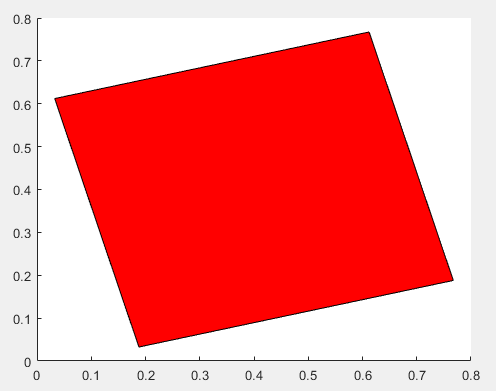arguments
Declare function argument validation
Syntax
arguments
argName1 (dimensions) class {validators} = defaultValue
...
argNameN ...
end
arguments (Repeating)
argName1 (dimensions) class {validators}
...
argNameN ...
end
arguments (Output)
argName1 (dimensions) class {validators}
...
argNameN ...
end
arguments (Output,Repeating)
argName (dimensions) class {validators}
end
Description
Input Argument Blocks
arguments ... end declares input arguments for a function. The
arguments block is optional. If you include one or more arguments
blocks, they must appear before the first executable line of the function. MATLAB® treats any argument block that is not labeled explicitly with
Input or Output as an input block.
Each argument can have one or more restrictions or a default value, as shown in this syntax:
argName (dimensions) class {validators} =
defaultValue
(dimensions)(1,2),(3,5,2), or(1,:). A colon allows any length in that dimension.(dimensions)The dimensions of the input must match
(dimensions)(dimensions)(1,:)specifies the input must be a 1-by-n row vector, but an n-by-1 column vector is compatible. The function reshapes a row vector input into a column vector. Similarly, a size of(2,3)allows scalar input, but it expands the input to a 2-by-3 matrix. See Validate Size and Class for more information.classdouble. The input must be the specified type or a type that can be converted to that type. For example, a function that specifiesdoubleaccepts values of classsingleand converts them todouble. For more information on conversions, see Implicit Class Conversion.{validators}mustBeNumericandmustBeScalarOrEmpty, enclosed in curly brackets. Validation functions error when the input arguments do not match their conditions. UnlikeclassdefaultValueargumentsblock.
For name-value arguments, argnv.namenvnameoptions.
y = myFunction(x,options)
In the arguments block, specify the names for name-value arguments as fields:
arguments
x
options.Name1
options.Name2
end For more information on using arguments blocks in general, see
arguments Block Syntax.
arguments (Repeating) ... end declares repeating input
arguments.
For example, if you create a function named myplot with repeating
arguments X, Y, and style, the
function accepts multiple sets of these three arguments, such as
myplot(x1,y1,style1,x2,y2,style2). MATLAB creates a cell array that contains all the values passed in for that
argument.
Functions can include only one repeating input arguments block. If the function includes both repeating and name-value arguments, declare name-value arguments in their own, separate arguments block after the repeating arguments block.
For more information on using validation with repeating arguments, see Validate Repeating Arguments.
Output Argument Blocks
arguments (Output) ... end declares output arguments for a
function. The output arguments block is optional. If you include one or more output
arguments blocks, they must appear after all input blocks but before
the first executable line of the function. When including both input and output blocks in
a function, including the (Input) and (Output)
attributes explicitly is recommended for readability. See Repeating Outputs with Argument Validation for an example.
(since R2022b)
Like input arguments, output arguments can have one or more restrictions, as shown in this syntax:
argName (dimensions) class
{validators}
See the description for arguments ... end for additional details.
Unlike input arguments, output arguments cannot define a default value, and validation
functions applied to an output argument cannot reference an earlier output
argument.
arguments (Output,Repeating) ... end declares a repeating output
argument for a function. You can use argument validation for a repeating output argument,
but you can define only one repeating output argument per function.
varargout can appear in a repeating output arguments block as long
as it is the only output argument. (since R2022b)
Examples
Limitations
Argument blocks are not supported in nested functions, abstract methods, or handle class destructor methods.
More About
Tips
Using data type restrictions can result in implicit conversions of input arguments. For example:
For this function, if you pass the stringfunction y = myFunction(inputArg1) arguments inputArg1 (1,1) double end ..."123"as the input argument, MATLAB converts the string to the numeric value123of typedouble.Validation functions do not change input values in any way, so to avoid data type conversion, use one or more validator functions instead of a data type to restrict the input. For example:
To avoid conversion of strings to numeric values, use
mustBeA,mustBeFloat, ormustBeNumeric.To avoid conversion of numeric values to strings, use
mustBeText,mustBeTextScalar, ormustBeNonZeroLengthText.To avoid size conversions, use
mustBeVectorormustBeScalarOrEmpty.
MATLAB is able to provide code completions and suggestions for functions with
argumentsblocks based on the information contained in the arguments block. This information is available without requiring afunctionSignatures.jsonfile. For more information on customizing code suggestions and completions see, Customize Code Suggestions and Completions.


